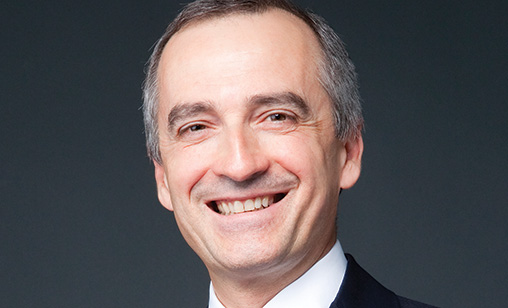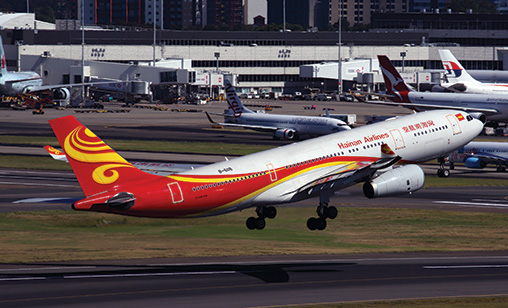News Backgrounder
China rides to the rescue at Virgin Australia
After two Chinese investors agreed within days of each other to buy up to 40% of Virgin Australia, the carrier followed the news with a successful A$1 billion plus fundraising. The cash injection will go towards debt reduction at the heavily leveraged airline.
July 1st 2016
Down Under’s Virgin Australia (VA) was rarely out of the news last month. As May turned to June, the carrier confirmed its newest investor was from China. Read More » As widely speculated, the purchaser was a subsidiary of China’s HNA Group, HNA Innovation. The company agreed to buy an initial 13% of the debt-heavy carrier, with plans to build the holding to 20%, after Air New Zealand (Air NZ) announced earlier this year that it would dispose of all or most of its 25.9% holding in Australia’s second international carrier.
As the market absorbed the news and the implications of it for VA’s expansion to China, Air NZ’s bosses were busy closing a deal with another Chinese company, Nanshan Group, a conglomerate with interests in clothing, finance, real estate, constructional materials and 26-month-old Qingdao Airlines of Shandong. Nanshan, Air NZ announced in early June, would buy 20% of the Kiwi airline’s 25.9% equity in Virgin Australia.
 |
| Virgin Australia CEO, John Borghetti: planning to use both Virgin Australia and its low-cost carrier subsidiary, Tigerair Australia, on future short haul international routes |
Ten days later, with only 15 minutes notice, Virgin Australia CEO, John Borghetti, called a press conference to announce his carrier had successfully negotiated a A$852 million (US$627.7 million) equity raising, a response to critics’ view of the airline’s scrappy cash flow. Combined with HNA Innovation’s $159 million investment, the deal will put $1.011 billion into the carrier’s seriously depleted kitty.
VA has fallen heavily into debt in its long transformation from low-cost carrier, Virgin Blue, to the full service airline it is today. After going back to its shareholders for a hefty top up loan earlier this year and then enduring public criticism of the carrier’s management by a disgruntled Air NZ, the airline underwent a review of its capital requirements. It became clear the VA balance sheet was in need of extensive repair and the equity fundraising process began.
Fortunately, VA’s investors, Singapore Airlines (SIA), HNA, the UK’s Virgin Group, Nanshan Group and Air NZ took up their pro-rata entitlements of the equity raising. SIA, HNA and the Virgin Group also signed binding commitments to contribute to the sub-underwriting of entitlements not taken up by other shareholders. Notably missing from the participants’ list, at the press conference and since then was Etihad Airways, a 21.8% partner in VA.
“Etihad is still going through their internal processes and we haven’t received the outcome of that yet. Obviously, they need to go to their board,” said Borghetti. At press time, the Abu Dhabi carrier had made no public statement on the matter.
The refinancing is only the tip of the iceberg for VA as it rather slowly works its way towards sustainable profits. A priority will be reducing its aircraft types from 10 to three. Its Fokker F50s have been decommissioned and 14 Embraer ERJ-190s will follow them out the door in the next three years. Its Fokker 100s will go too. Up to six of its 14 ATR turboprops also will leave the Virgin fleet and its E-170s have been leased to Delta Air Lines. Virgin has a fleet of 131 aircraft, including three B777-300ERs, six A330-200s, two A320-200s and 75 B737-700 (2) and -800s (73), according to its website fleet listing in June.
Virgin’s only firm order is for 23 new B737MAX 8s, which it announced in 2012. They are due for delivery from 2019 to 2020. It is understood the airline has converted another order for 17 B737-800s to the MAX model.
As part of the planned restructuring, inefficiencies will be eliminated in crewing, ground handling, MRO, catering and fuel handling.
When Borghetti was asked if VA’s new Chinese partners threatened the airline’s independence he said: “They are two separate entities based on the assumption they both acquire 20% [of the airline]. Importantly, if you look at our board protocols, we have a majority of independent directors. This company always has been run independently. No shareholder has had control of the business. It is the way it will continue to be run. Nothing will change.”
On the other hand, Borghetti said VA’s Chinese investors would bring huge benefits to the airline. “If we accept that the China market will keep growing the way it has been growing, and of course it will, then you have to tap that market,” he said.
“You can’t tap that market unless you have a strong partner at the other end that provides distribution. Like travel agents who give us feed and like airlines and so on. The value-add is going to come from this relationship.”
Borghetti said when work started five years ago on repositioning the company, it was approached “with a very stretched balance sheet at the time” and with many initiatives funded with debt. It is time to strengthen the balance sheet and deleverage the company, he said.
The HNA Group has invested more than US$15 billion worldwide by taking ownership or part-ownership in companies ranging from supermarkets, travel agencies and transport related firms to nine airlines and Avolon, an aircraft lessor.
 |
It has recently agreed to buy Swiss airline caterer, Gategroup Holding, for a reported US$1.4 billion and is in talks with Air France to buy 50% of its catering unit, Servair. Other recent investments included the 1,400 property Carlson Hotels Inc, most widely known for its Radisson hotel chain.
Nanshan is a large, privately owned Chinese conglomerate that controls Qingdao Airlines and a private jet business along with interests in sectors spanning aluminum, agriculture, education and property. In Sydney, it owns the Riverside Oaks Golf Course and the Pullman Hotel, adjacent to the international airport.
VA’s first outlay with its new found cash will be repayment of the A$425 million (US$313.2 million) advance it received from its existing shareholders earlier this year. “The balance of the funds will be used to reduce debt and [will be] linked to a very rigorous and comprehensive cost reduction program and efficiency drive,” Borghetti said.
There will be some redundancies among the carrier’s 10,000 staff, but new positions will be created as the airline was restructured, he said. “It’s an evolution, not a slash and burn exercise,” he added.
For Borghetti, the most exciting aspect of the new partnership is the opportunity it offers VA to make serious inroads into China. Late last month, Australia’s International Air Services Commission approved VA’s application to fly to Beijing and Hong Kong, with the flights to commence on June 1, 2017. VA can link its services to the two cities with Hainan Airlines’ extensive regional network.
He has the aircraft to serve the routes. “We are fortunate,” he said. “We have a pretty good mix: B777s and A330-200s. The B777s are a good volume mover for long-haul travel to America and the A330-200 is perfect for China, particularly the northern part of China. The A330-300 can’t make Beijing, but the -200s can.
“When we took the -200s for domestic operations we bought them with the view that we needed the wide-body for trans-continental services. But we knew that at some point we would need some international coverage in Asia and the best aircraft would be the -200. It has the range.”
Would Virgin consider flying to Europe? It services this demand with code-shares with SIA through Singapore and Etihad Airways via Abu Dhabi. “I am very happy with what we are doing with SIA and Etihad. It works very well for us,” he said. “There are no plans afoot for us to start flights to Europe.
“We have good coverage there and that’s not going to change. More holistically, are we going to fly more internationally as Virgin? I’d answer that question two-fold: Categorically yes to China with the Virgin brand. Let’s not forget inbound China is the only market that is growing at the moment. The Australian domestic market is pretty flat and outbound from Australia is not too flash either.
“The big standout is inbound China so yes, we will fly to China. The next question is about short-haul international. What roles do Tigerair Australia, (a 14 A320 LLC owned by VA) and Virgin play? We are not ready to talk about that yet, but we will have two brands available for short-haul international.”
Tigerair Australia’s only international destination is Bali in Indonesia. Borghetti’s remarks suggested VA’s international network almost certainly will be expanded to include Singapore and/or Bangkok.
The fact that VA is finally headed for Asia has not elicited much public comment from friend or foe of the carrier. Qantas group CEO, Alan Joyce, said he would rather be in his position in China and Asia than his competitor.
SIA CEO, Goh Choon Phong, speaking during the International Air Transport Association (IATA) annual general meeting in Dublin last month, refused to be drawn on the impact of VA’s new shareholder mix. “It is premature to talk about it. We will see what comes out of it,” he said.
SIA, which carries VA traffic to China through Singapore on a code-share arrangement, may lose some business from the deal. Or it may look at its own tie-up with HNA, its new partner on the Virgin Australia board.
| 'I’ll be sticking around. There’s lot to do. I’m just getting on with it. In the big picture, this has been about repositioning the company, growing it, fixing the balance sheet and making it ready for the next stage of growth. Obviously, it is going to be China' |
| John Borghetti Virgin Australia CEO |
Unlike the VA/HNA investment, the Nanshan buy-in surprised the market. Kuala Lumpur-based analyst, Shukor Yusof, head of Endau Analytics, described Hainan Airlines as a very well run airline. “They are flush with cash and seemingly have a mandate from the (Chinese) government to go around the world and source or make lucrative investments,” he said.
“It makes sense for them to go into this part of the world where there is a boom in Chinese demand. When you have very deep pockets you can do anything. They have a huge appetite to do more, not just from an airline perspective, but from the entire ecosystem of transportation.”
Borghetti said:“the big, big issue for consumers is they have the choice of two strong, very competitive airlines who cover every part of the market and give consumers choice.
“We can’t allow ourselves to say ‘this is the next step and once we have done that, that’s it, we’re good’. You have to keep re-inventing and evolving. It will never stop. The moment it stops is the time the company will be overtaken and won’t have a future.”
As for his future, Borghetti said: “I’ll be sticking around. There’s lot to do. I’m just getting on with it. In the big picture, this has been about repositioning the company, growing it, fixing the balance sheet and making it ready for the next stage of growth. Obviously, it is going to be China.”